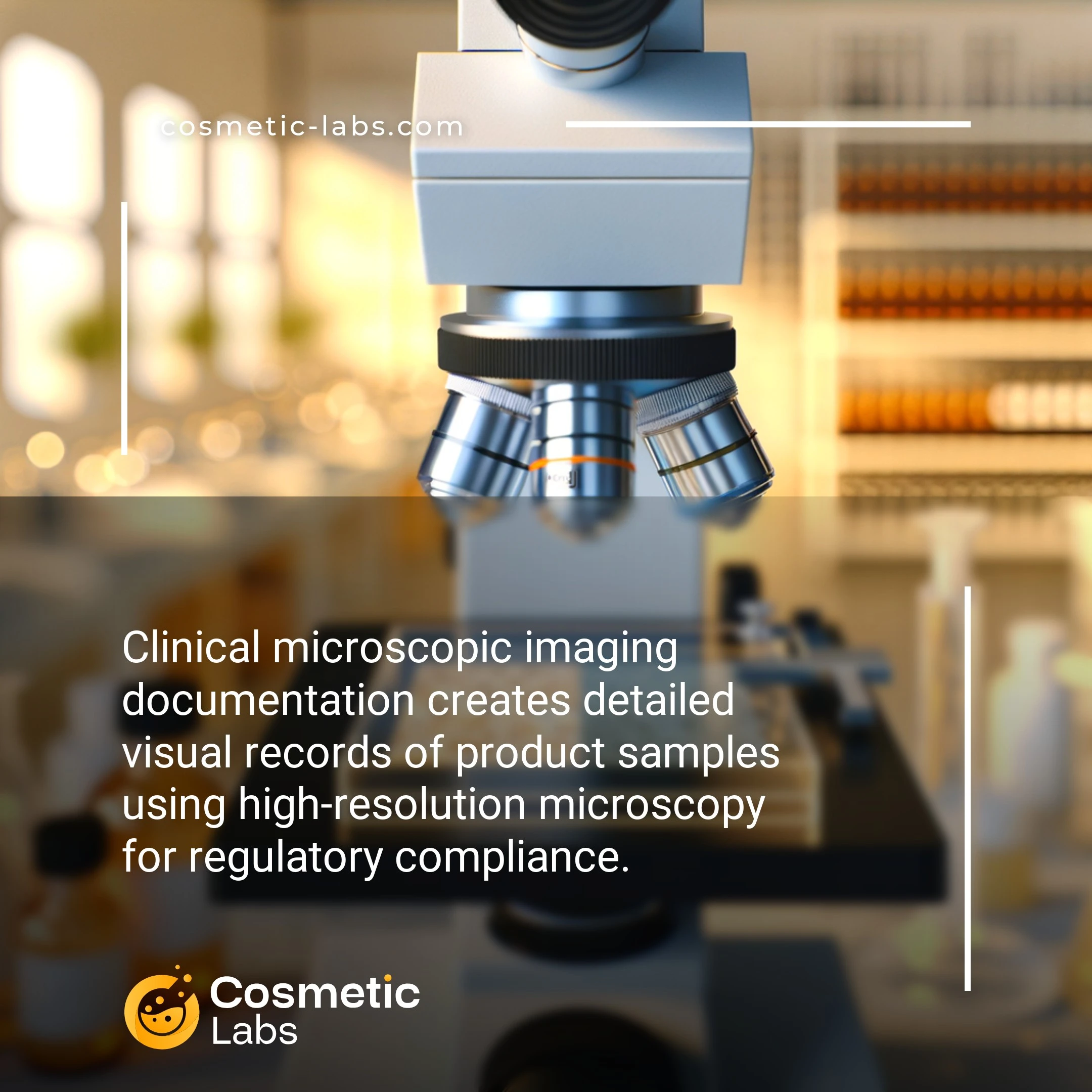Clinical Microscopic Imaging Documentation for Cosmetics

What is Clinical microscopic imaging documentation?
Clinical microscopic imaging documentation services provide detailed photographic records of cosmetic ingredients and formulations under magnification, capturing particle size distribution, crystal structures, and surface morphology. Labs use specialized equipment like scanning electron microscopes to document how active ingredients interact at the cellular level, creating regulatory-compliant visual evidence for product claims and patent applications. This documentation proves ingredient efficacy and supports marketing claims with scientific backing.
Why do you need this service?
Beauty brands use microscopic imaging documentation to validate ingredient particle size distribution in sunscreens and foundations, ensuring consistent coverage and performance claims. Labs capture detailed images of emulsion stability, crystalline structures in pigments, and skin penetration patterns that support regulatory submissions and marketing claims with visual proof your formulations perform as intended.
Who provides Clinical microscopic imaging documentation services?
All cosmetic labs providing Clinical microscopic imaging documentation services
There is no company providing these services at the moment.
Clinical Microscopic Imaging Documentation Services
Clinical microscopic imaging documentation provides detailed visual evidence of product safety and efficacy through standardized imaging protocols. Labs capture high-resolution images of skin samples, cellular structures, and tissue responses to create comprehensive visual records that support regulatory submissions and clinical claims.
Dermatological Assessment Imaging
Labs use specialized microscopy equipment to document skin changes at the cellular level. Dermatoscopy imaging captures surface-level skin improvements, while confocal microscopy reveals deeper structural changes in the epidermis and dermis. This documentation proves product efficacy for anti-aging, brightening, and barrier repair claims.
Key imaging protocols include:
- Before and after treatment comparisons
- Collagen fiber density measurements
- Melanin distribution analysis
- Hydration level visualization
Histological Documentation Services
Tissue sample preparation and microscopic analysis create permanent records of product interactions with skin structures. Labs prepare histological slides using standard staining techniques, then capture images at multiple magnifications to document cellular responses, inflammation markers, and tissue architecture changes.
Documentation packages typically include annotated images, measurement data, and interpretation reports formatted for regulatory agencies. These visual records support safety dossiers and efficacy claims for cosmetic products targeting specific skin concerns.
Connect with imaging specialists on our platform to discuss your product’s documentation requirements and regulatory goals.
Real-World Applications of Clinical Microscopic Imaging Documentation
Cosmetic brands rely on clinical microscopic imaging documentation services to validate product claims, support regulatory submissions, and demonstrate measurable skin improvements to consumers.
Anti-Aging Product Validation
Labs capture high-resolution images of skin texture, pore size, and wrinkle depth using dermoscopy and confocal microscopy before and after product application. These images document changes in collagen density, elastin fiber organization, and epidermal thickness over 4-12 week study periods.
The documentation includes calibrated measurements showing percentage improvements in skin smoothness, reduction in fine line visibility, and changes in cellular turnover rates. Brands use these visual records to substantiate anti-aging claims in marketing materials and regulatory filings with precise numerical data.
Acne Treatment Efficacy Studies
Microscopic imaging tracks comedone formation, sebaceous gland activity, and inflammatory responses throughout acne treatment protocols. Labs document bacterial count reductions, pore clearing progression, and tissue healing using standardized photography and digital analysis tools.
The service includes weekly image capture showing lesion count changes, sebum production measurements, and skin barrier function improvements. Documentation packages contain before/after comparisons with statistical analysis supporting specific efficacy percentages for product labeling and consumer communication.
| Imaging Method | Documentation Focus | Typical Study Duration | Key Measurements |
|---|---|---|---|
| Dermoscopy | Surface texture analysis | 8-12 weeks | Pore size, skin smoothness |
| Confocal Microscopy | Cellular structure changes | 4-16 weeks | Collagen density, cell turnover |
| Fluorescence Imaging | Bacterial activity tracking | 2-8 weeks | Microbial counts, inflammation |
| Cross-polarized Light | Pigmentation assessment | 6-12 weeks | Melanin distribution, spot size |
Ready to validate your product’s performance with professional microscopic imaging documentation? Connect with experienced cosmetic labs on our platform to discuss your specific testing requirements and timeline.
